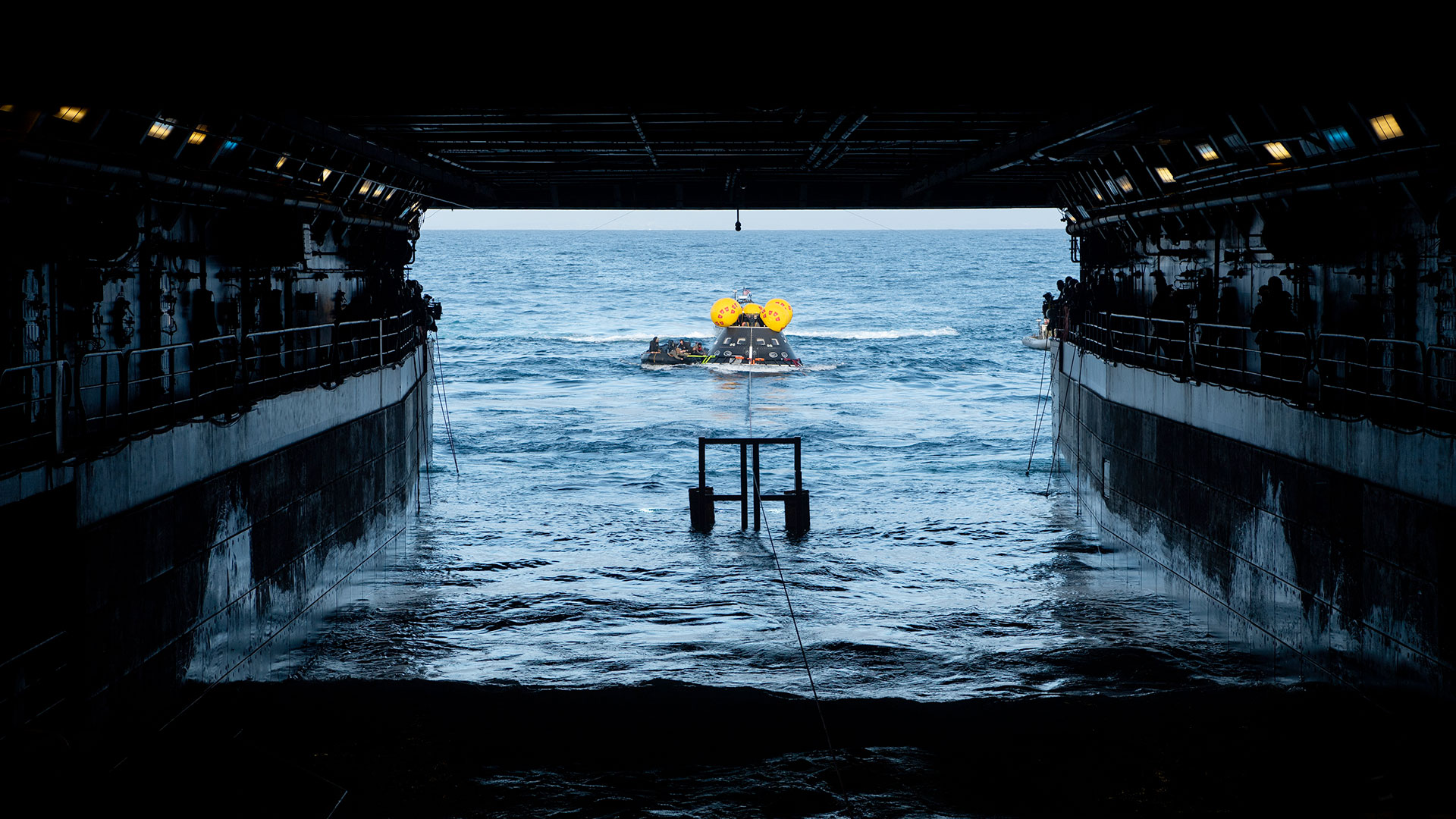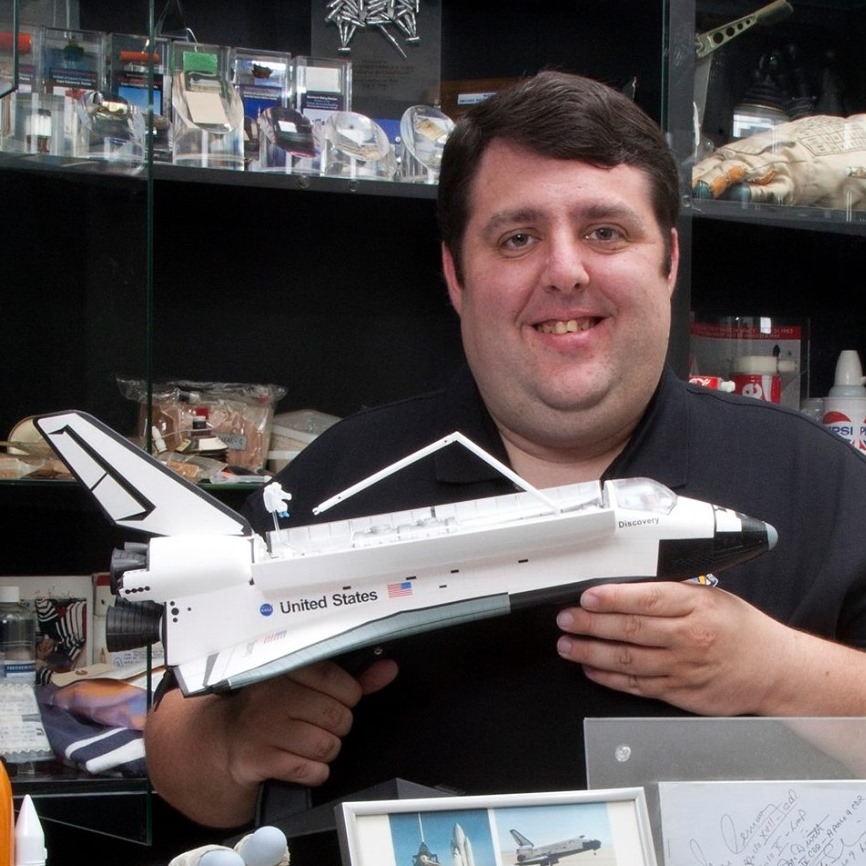NASA practices recovering its next moon astronauts: Space photo of the day
NASA's Orion crew module test article is framed by the well deck of the U.S. Navy's USS Somerset as teams practice Artemis 2 recovery ops.

As seen from inside the well deck on board the USS Somerset, NASA and Department of Defense teams practiced recovery procedures in support of the agency's plans to send the Artemis 2 astronauts around the moon and splashdown in the Pacific Ocean.
Why is this amazing?
It has been more than 50 years since a crew splashed down on Earth after flying to the moon. Now NASA and the U.S. Department of Defense are preparing to do that again in support of the space agency's upcoming Artemis 2 mission, which will fly four astronauts around the moon before returning to Earth and splashing down in the Pacific Ocean.
Unlike during the Apollo program, when helicopters were used to hoist the crew and command module onto the flight deck of U.S. Navy airfcraft carriers, the Artemis program is using amphibious transport dock ships that have open well decks to envelop the Orion capsule.
Who took part in this practice?
Several astronauts participated in the NASA Artemis Underway Recovery Test-12 in late March 2025. Among them were Artemis 2 pilot Victor Glover, as well backup crew member Andre Douglas and NASA astronauts Stan Love and Deniz Burnham. ESA (European Space Agency) astronaut Luca Parmitano also took part in the training exercise.
Others involved included Capt. Andrew "Andy" Koy, commanding officer the USS Somerset, his crew and NASA's Artemis 2 landing and recovery director Liliana Villarreal with the agency's Exploration Ground Systems Program out of Kennedy Space Center in Florida.
What will happen on the Artemis II mission?
As NASA's first crewed mission to the moon since 1972, the Artemis 2 mission will be the first test flight of the SLS (Space Launch System) rocket, Orion spacecraft and supporting ground system with astronauts aboard. Reid Wiseman, Victor Glover and Christina Koch of NASA and CSA (Canadian Space Agency) astronaut Jeremy Hansen will log more than 600,000 miles (965,000 kilometers) as they fly around the moon and back, including possibly traveling farther into space than crew has done before.
The mission, which is targeted to launch no later than April 2026, will set the stage for future Artemis crews to land at the moon's south pole. There, astronauts will gain the experience needed to send humans to Mars.
Where can I learn more?
You can see the progress NASA has made stacking the Artemis 2 SLS rocket and read about earlier recovery tests in preparation for the mission.
Breaking space news, the latest updates on rocket launches, skywatching events and more!
Join our Space Forums to keep talking space on the latest missions, night sky and more! And if you have a news tip, correction or comment, let us know at: community@space.com.

Robert Pearlman is a space historian, journalist and the founder and editor of collectSPACE.com, a daily news publication and community devoted to space history with a particular focus on how and where space exploration intersects with pop culture. Pearlman is also a contributing writer for Space.com and co-author of "Space Stations: The Art, Science, and Reality of Working in Space” published by Smithsonian Books in 2018.In 2009, he was inducted into the U.S. Space Camp Hall of Fame in Huntsville, Alabama. In 2021, he was honored by the American Astronautical Society with the Ordway Award for Sustained Excellence in Spaceflight History. In 2023, the National Space Club Florida Committee recognized Pearlman with the Kolcum News and Communications Award for excellence in telling the space story along the Space Coast and throughout the world.
You must confirm your public display name before commenting
Please logout and then login again, you will then be prompted to enter your display name.
